Winter in Montana transforms the landscape and the creatures that call it home, including birds. While many birds bid the state farewell as the cold sets in, some hardy species and smart strategists stick around. They’ve got ways to stay warm and find enough to eat, showing us their beauty and resilience.
We will examine Montana’s winter birds, from the tough ones that stay to the travelers just passing through. You will learn the clever tactics birds use to survive the cold, like finding warm spots and slowing their metabolism.
- Related article: Get Up-Close With Montana Wildlife
Have you ever wondered how birds thrive in Montana’s icy winters? We’re about to reveal the secrets of these snowbirds and how, with a little help from nature, you can enjoy watching them right in your backyard. Get ready to discover the wonder of Montana’s winter birdlife.
7 Key Takeaways on Montana Winter Birds
- Montana hosts a variety of bird species that migrate to warmer areas before winter, with unique departure times and destinations.
- The upland sandpiper migrates to the Argentinian prairies, while the sage grouse only travels to warmer parts of Idaho.
- The state’s birds have developed remarkable strategies to survive cold winters, including feather insulation and smart food storage.
- Montana has become a temporary home for many bird species despite harsh winter conditions, offering rich opportunities for birdwatching.
- Knowing where to go is essential for winter birdwatching, with water-rich areas particularly attractive to birds.
- Attracting winter birds to your home with feeders and water can provide a close-up birdwatching experience, highlighting the importance of a clean and safe feeding environment.
- Feeding birds doesn’t significantly impact bird populations because birds are adapted to various food sources.
What You Need to Know About Bird Migration in Montana
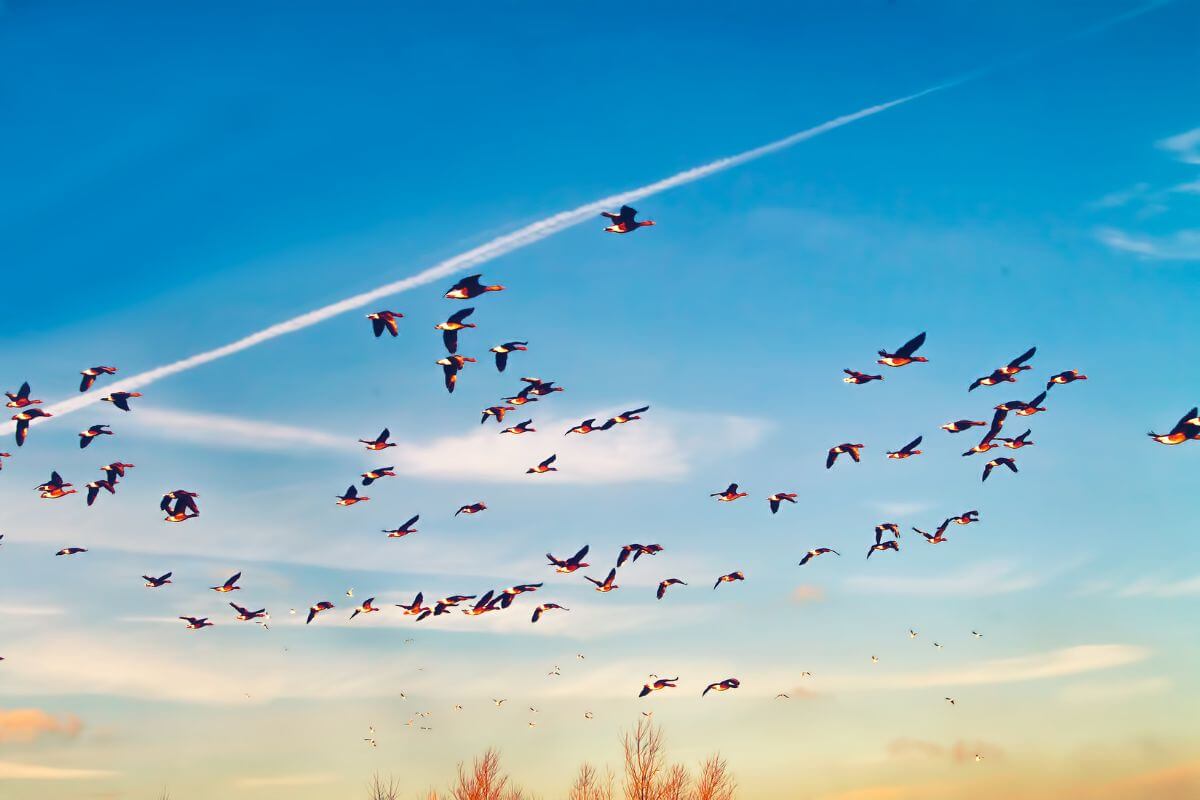
Birds in Montana face a tough choice when winter comes. Most decide to head south in search of warmer places and more food. This journey is called migration, and it’s all about survival.
Some birds quickly leave Montana, even before summer is over. They know it’s time to go when the days start getting shorter. It’s like they have an internal calendar that tells them when to leave.
Early migratory bird activities in Montana include:
- Long-billed curlews fly back to Mexico in late June after breeding in Montana.
- Western tanagers and Bullock’s orioles head out in late July and early August.
- Mourning doves are out of here just before hunting season starts.
- Hummingbirds make a long journey to Mexico before the first snowfall.
But not all birds leave early. Some, like tundra swans, scaup, and mallards, wait until early December when it’s really cold and frozen up north. Then, they are pushed south when the lakes and rivers freeze over.
The upland sandpiper has the longest migration journey, all the way to the Argentinian prairies. On the other hand, some individual birds, like the sage-grouse, have a short trip to warmer parts of Idaho.
Many birds pass also through Montana in the fall on their way to warmer places. They come from northern areas where it gets too cold and snowy. Montana is like a pit stop for them. These include larger birds like snow geese, Canada geese, and colorful warblers.
This variety of migration is a wonder to behold and plays a crucial role in bird conservation and our understanding of nature. It shows how different birds have adapted to survive and thrive in their environments.
How Birds Survive Montana’s Cold Winters
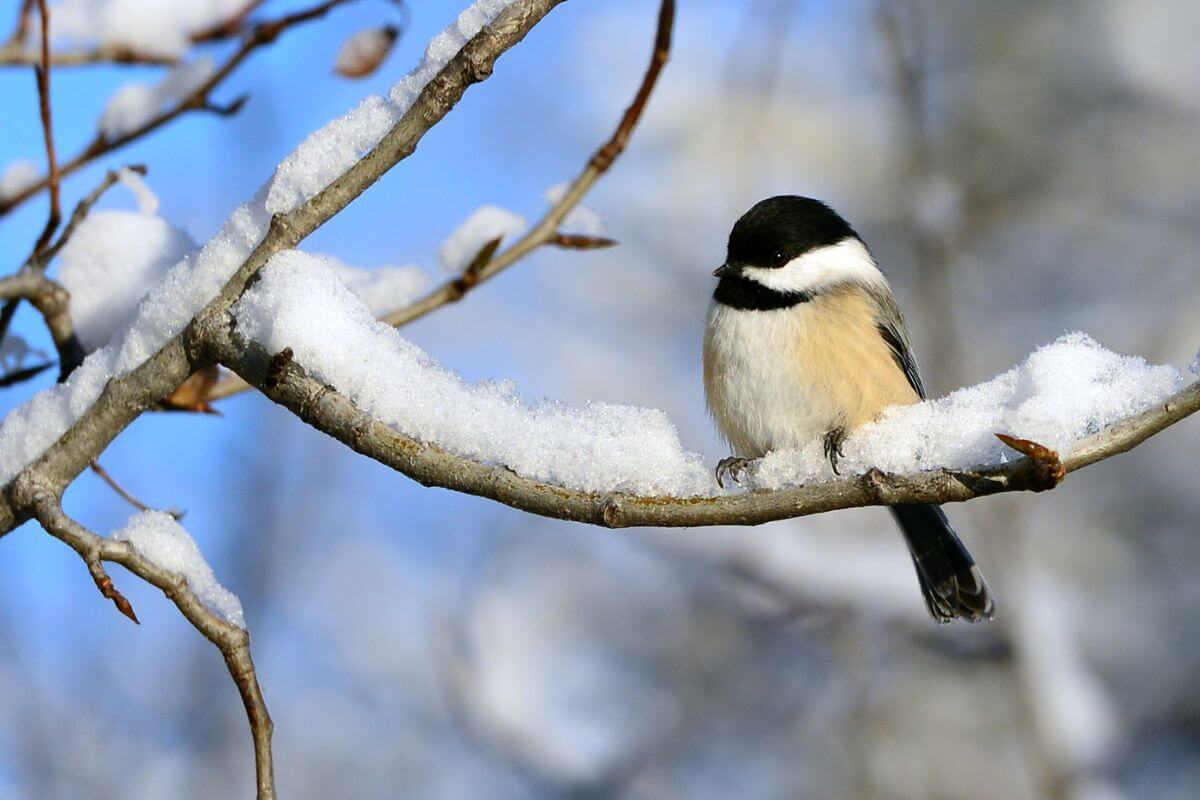
Montana’s winter is no joke, with temperatures that can plunge far below what many consider bearable. Yet, the state is home to various birds that survive and thrive in these extreme conditions. How do they do it? Let’s look at the incredible strategies birds in Montana use to survive the state’s harsh winters:
- Feathers – Birds’ feathers are their first and perhaps most important defense against the cold. They fluff up their feathers to create layers of insulation, trapping air close to their bodies. This air is a barrier, keeping the cold from penetrating and their body heat escaping.
- Finding the Right Spot – Many birds in Montana look for microsites that are a bit warmer than the surrounding area, like cozy nooks among rocks or inside tree cavities.
- Staying Together – Have you heard the phrase “there’s strength in numbers”? Well, this is more than just a saying for birds like the golden-crowned kinglets. These tiny birds huddle in tight groups, sharing body heat and helping each other stay warm through the long winter nights.
- Smart Food Storage – Clark’s nutcrackers are real pros at planning. They hide thousands of pine seeds during the warmer months and rely on these hidden stashes to get them through winter. This way, they always have a meal ready without needing to brave the cold too often.
- Snowy Hideouts – For some birds, like the common redpoll, snowbanks are more than just frozen water. They burrow into the snow, where temperatures are milder than the icy air, creating a natural shelter.
- Metabolism Magic – Some birds slow their metabolism to survive when food is scarce and the cold is unrelenting. This means they burn fewer calories and can make their energy reserves last longer. Black-capped chickadees are masters of this technique.
- Chasing the Sun – Like you might move to a sunny spot on a cold day, birds seek the sun’s warmth. Even when the air is frigid, sitting with their backs to the sun helps species like the sharp-tailed grouse soak up enough warmth to make a difference.
These incredible strategies show how adaptable and resilient Montana’s winter birds are. They’ve found ways to survive and enjoy the snowy season.
What Birds Can You See in Montana During Winter?
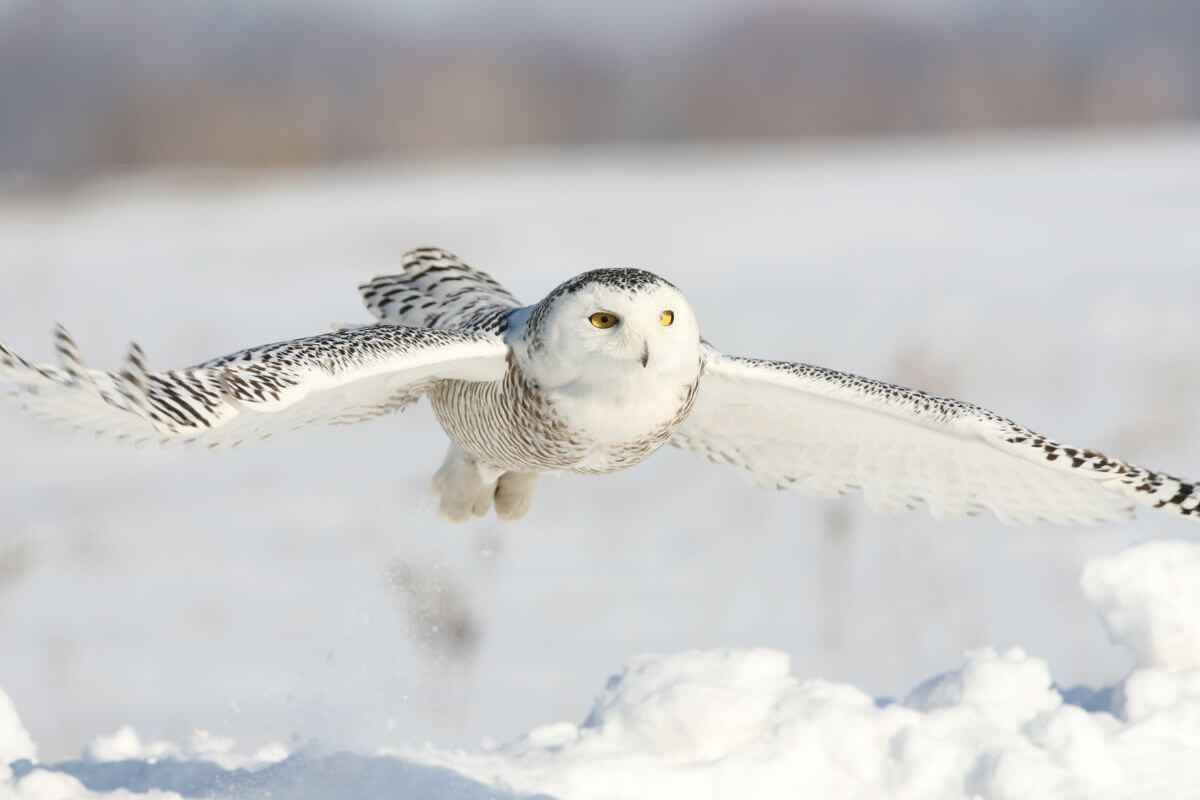
Winter is a season of surprising birdlife in Montana. Despite the chilly temperatures and snow-covered landscapes, the state has become a temporary home for many bird species. This means Montana is alive with bird sounds and sights.
Among the 443 species that call Montana home at some point in the year, about 40% endure the winter months. In addition to common birds like crows, ravens, and magpies, there are 36 species of waterfowl, 13 birds of prey, 16 types of sparrows, and nearly all of Montana’s owls.
Let’s take a closer look at some of the birds that make Montana their winter sanctuary:
- Bald Eagles – While many bald eagles stay in Montana year-round, some head south in September to breed, returning in late fall or early winter. Those that remain feed on fish from open rivers.
- Bohemian Waxwings – Bohemian waxwings spend their summers in Canada and Alaska’s boreal forests, gracing Montana with their presence in the winter.
- Canada Geese – Canada Geese are often seen in areas with open water. They stay in Montana through the winter, sometimes alongside goldeneyes and mallards.
- Northern Flicker – The Northern Flicker is the second largest woodpecker in northwestern Montana and is a common sight throughout the state.
- Rough-Legged Hawks – Rough-legged hawks are the most common winter visitors, coming from Canada to enjoy Montana’s comparatively milder winter. They nest on cliffs overlooking the Arctic tundra.
- Snowy Owls – Known for their irruptions, some snowy owls migrate from the Arctic to Montana and other northern states in the Lower 48 when deep snow makes hunting difficult.
These are just a few examples of the diverse birdlife you can see in Montana during the winter. Whether it’s the call of a hawk overhead or the sight of geese in flight, the state offers a unique opportunity to witness nature’s resilience and beauty, even in the coldest months.
Where to See Winter Birds in Montana
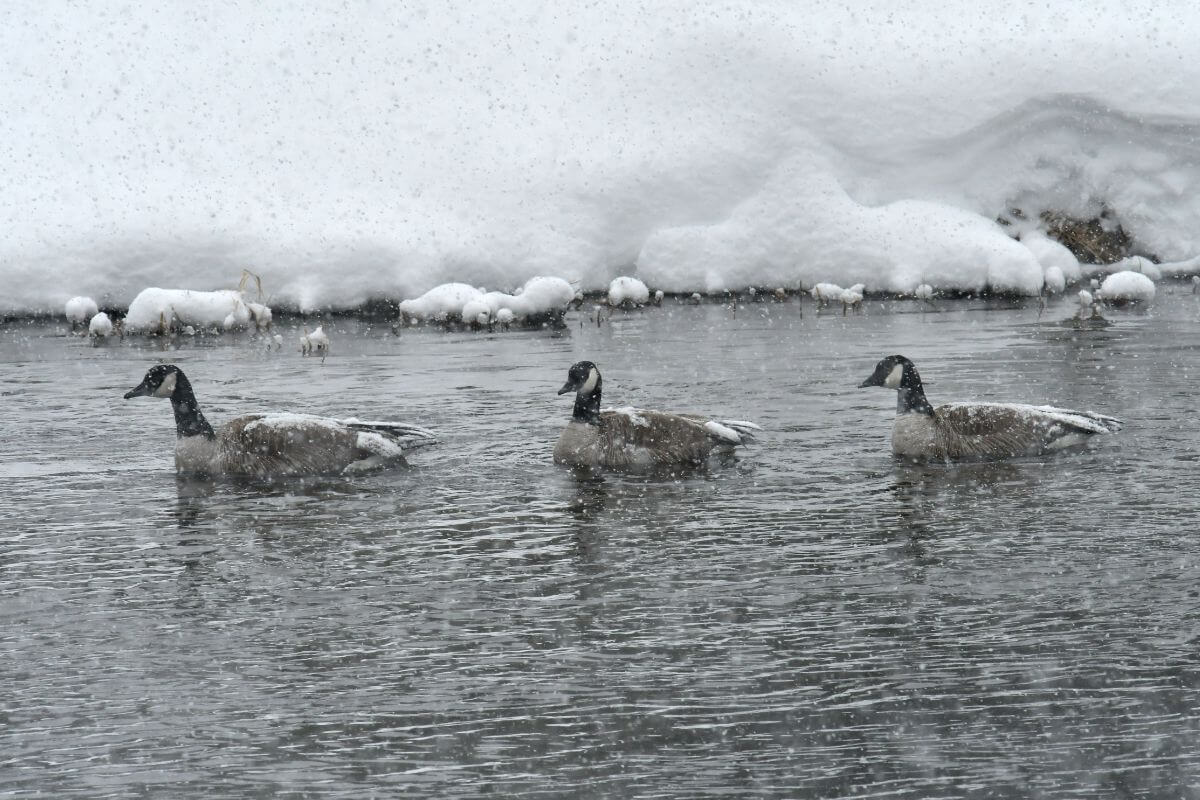
When you’re into winter bird watching, the first rule is to know where to go. Montana offers some fantastic spots, and it’s smart to start your birding journey on a GVLT (Gallatin Valley Land Trust) trail, especially near open water.
Any lively stream or river becomes a magnet for birds in the winter. These areas are rich in aquatic plants and creatures, which means a feast for the birds that eat them.
Some top picks for spotting winter birds in Montana are:
- East Gallatin Recreation Area and Cherry River Fishing Access – These places are perfect for seeing water-loving birds known as waterfowl. Walk along the Story Mill Spur Trail by the East Gallatin River, and you’ll likely see many different bird species.
- Sourdough Trail – This trail is alive with the sounds of chickadees and the sights of woodpeckers in December. It’s a great place to observe various habitats, making it a bird-watching paradise all year round. Walk from Langhor Park to Sundance Springs for the best experience.
These spots are not just about seeing a type of bird but about experiencing the magic of winter bird habitats. Whether it’s the chirps of chickadees or the peaceful river flow, Montana’s winter birds have a lot to show you.
How to Attract Winter Birds for Home Birdwatching in Montana
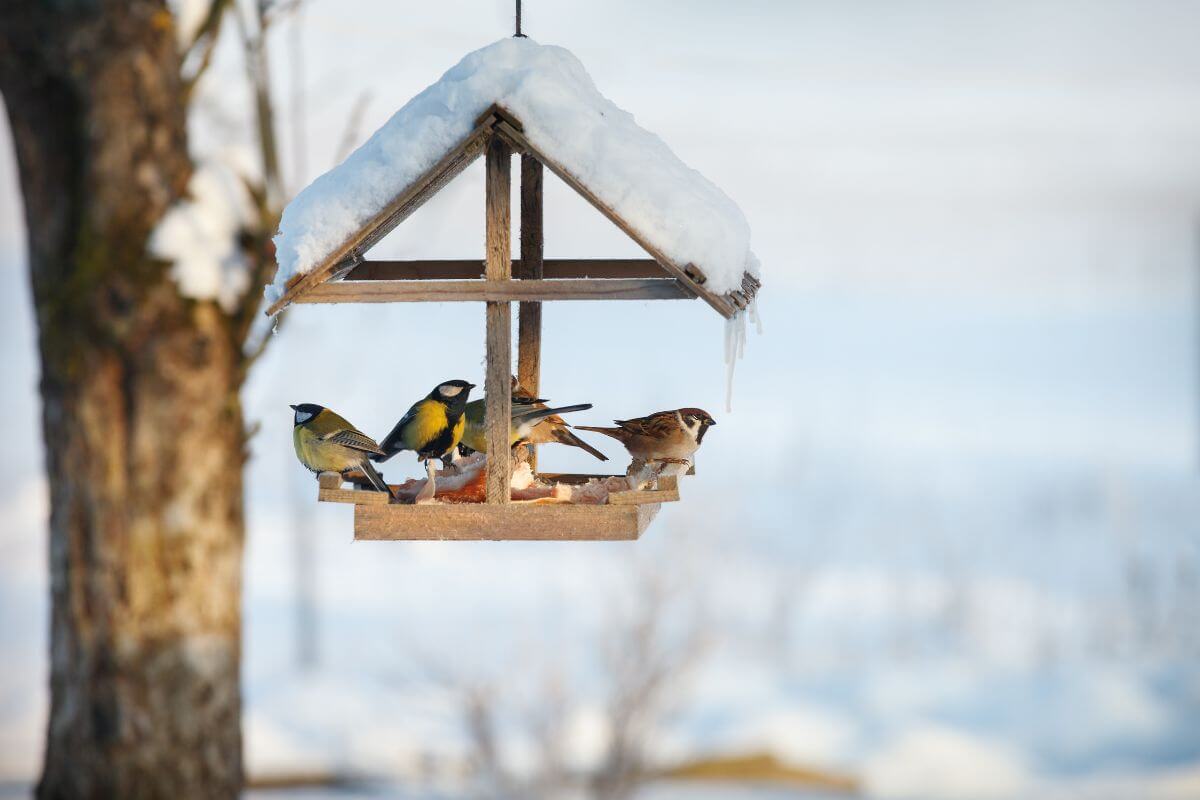
When winter arrives, the trees shed their leaves, making it easier to spot birds in your area. This season uncovers a world of bird diversity that might surprise you.
You can draw these fascinating creatures into your home by creating a welcoming environment with bird feeders and water. Attracting winter birds offers a safe, natural space with the essentials they need.
A U.S. Fish & Wildlife Service report states that over 50 million Americans set up bird-feeding stations in their backyards. You can attract nearly 50 bird species during the winter with the right habitat. This shows how important our homes can be for these animals, especially during tough weather and food shortages.
While bird feeders can help many birds, they can also be risky. Backyard birds contract diseases more easily when many birds gather in one place, like around a feeder. That’s why keeping your feeders clean is important if you decide to use them.
In Montana, the birds you’ll likely see at your feeder include sparrows, finches, and their relatives. This group covers a range of species, from siskins and goldfinches to grosbeaks and juncos. You’ll also notice chickadees, woodpeckers, and the larger jays and crows making their rounds.
It’s interesting to note that while feeders are a nice extra treat, most of these birds’ diet – about 75 to 80 percent – comes from nature. This means that feeding birds doesn’t greatly impact their numbers. They’re good at finding food independently and are used to changing their diet.
The real treasure in feeding birds is the joy and connection it brings. Watching these beautiful creatures up close can be incredibly rewarding. It deepens our love for the outdoors and teaches us about nature’s delicate balance.
Montana Winter Birds Final Thoughts
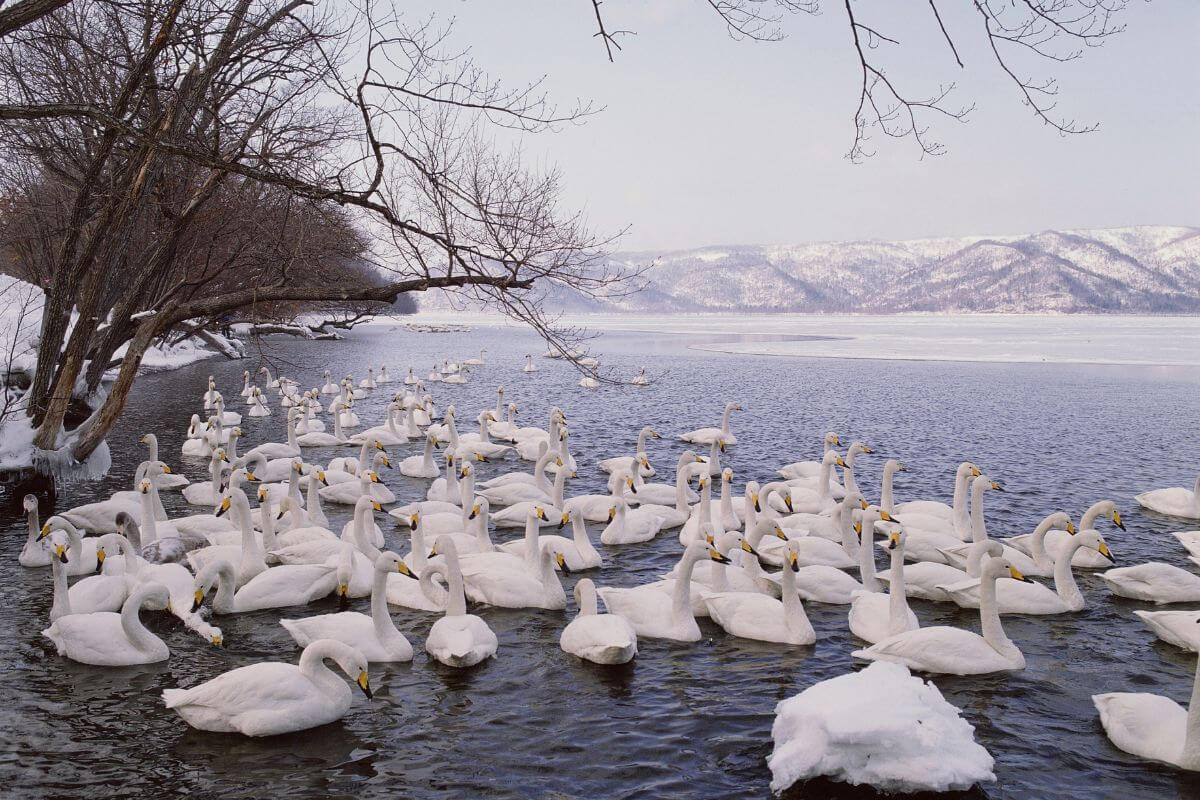
Montana’s winter transforms the landscape and challenges its winged residents. Yet, the state’s birds show us the incredible power of adaptation and resilience. They take on daring migrations, finding warmth and safety in far-off lands.
Those who stay behind have evolved ingenious ways to endure the cold, from fluffy feathers to clever food storage. This diversity of strategies shows how creative nature is and how determined birds are to survive.
For bird enthusiasts, Montana’s winter offers a front-row seat to a remarkable nature show. With the right knowledge, you can witness the state’s waterways teeming with life, attracting a colorful array of winter birds.
Whether you’re exploring trails or simply birdwatching via bird feeders, the opportunity to connect with wildlife is close by. Attracting birds to your home with clean feeders and water offers a glimpse into their lives and deepens our appreciation for the delicate balance of the natural world.
Montana Winter Birds FAQs
1. What Birds Migrate Through Montana?
Montana is part of the migratory route for numerous bird species. Some common migratory birds passing through the state include waterfowl like ducks and geese, songbirds like warblers and sparrows, raptors like hawks and eagles, and shorebirds like sandpipers and plovers.
2. Does Montana Have a State Bird?
The state bird of Montana is the Western Meadowlark (Sturnella neglecta).
3. What Is the Largest Bird of Prey in Montana?
The largest bird of prey in Montana is the Golden Eagle (Aquila chrysaetos). It’s known for its impressive size and powerful hunting abilities, often preying on small mammals such as rabbits and ground squirrels.
4. How Many Birds Are in Montana?
As the fourth-largest state, Montana hosts a remarkable 443 species of birds (including accidentals), occupying diverse habitats from prairie to alpine. This rich avian diversity reflects the varied landscapes found throughout Montana, attracting birdwatchers and ornithologists alike to witness the wide array of species that call the state home.
5. What Is the Black and White Bird in Montana?
One black and white bird commonly found in Montana is the Black-billed Magpie (Pica hudsonia). It has distinctive black and white plumage with iridescent blue-green highlights on its wings and tail.
Dive deeper into Montana’s untamed beauty. Explore more articles now:
- Montana’s Winter Wildlife
- Montana’s Wolf Population
- Learn About Lynxes in Montana
- Facts About Montana’s Mountain Goat

